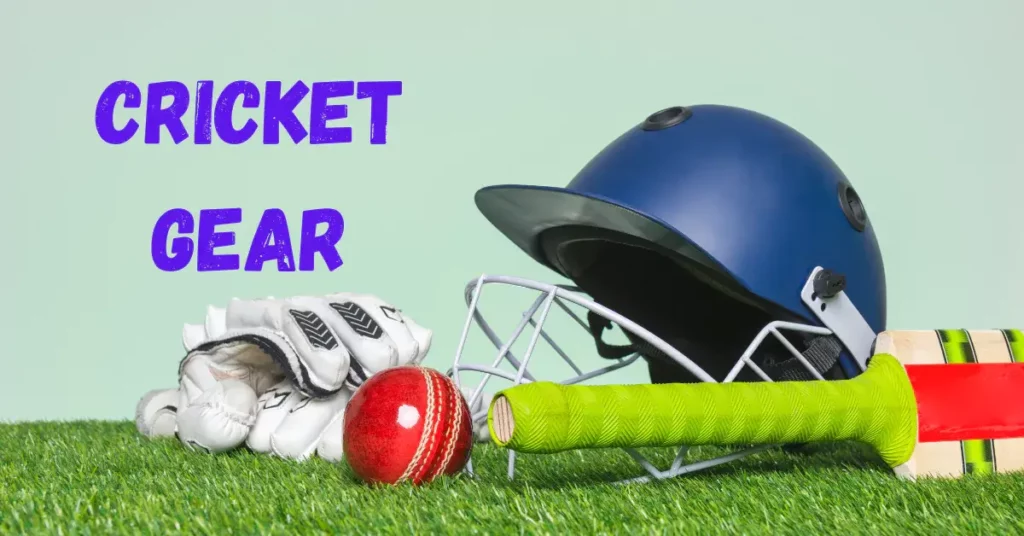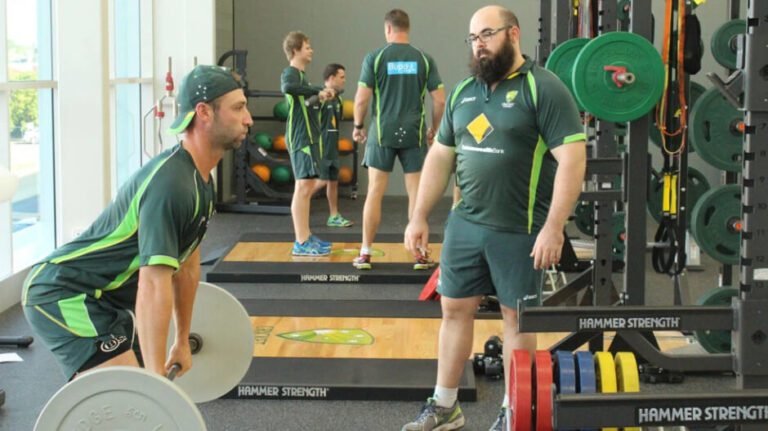Cricket Gear And Equipment
Cricket is a game that requires a wealth of equipment or Cricket Gear to stay safe and reach optimum performance levels. Cricket is one of the most thrilling games being played in and by 108 countries worldwide. Cricket is considered one o the most successful games; after football, it is the most-watched game worldwide.
The International Cricket Council, which has members from over one hundred nations and territories but only twelve of which now play Test cricket, oversees cricket on a global scale.
The “Laws of Cricket” specify the regulations of the game. It has multiple formats like Test cricket, ODI, and T20. But, like any other game, it also requires equipment and gear. In this article, we will briefly explain it.
Cricket Gear & Equipment Required

Following is the entire detailed article about equipment and gear that are required for cricket:
Ball
Cricket balls are made of cork and wrapped in leather. They usually weigh between 155.9 grams and 163 grams, are incredibly hard, and can injure people when they collide with them. Red and white are the two most popular colors for cricket balls, with red being used in Test and First Class matches and white being used in One-Day matches.
Bat
Cricket bats have a conical handle attached to a flat wood bat. They must be less than 10.8 centimeters broad and no longer than 96.5 centimeters in length. Although there is no set weight for bats, most weigh between 1.2 and 1.4 kg.
Spiked Shoes
The comfort and grip of cricket shoes are the most crucial factors to consider. While pimpled rubber soles are best for hard surfaces, spiked shoes are better for soft surfaces. Batters typically select shoes with rubber-treated heels and strong front spikes for proper traction. Fast bowlers usually prefer shoes with front and back ends and with ankle support.
Safety Equipment
Batters and wicketkeepers usually wear an abdomen guard, also known as a cup, box, or guard, to protect themselves against the impact of the ball hitting the body. Batters and wicketkeepers also wear leg pads to protect the shins, etc.
Wicketkeepers also wear protective eyewear to protect their eyes, as the impact of the ball hitting the wicket can be great, and bails might get dislodged after effects.
Following is a detailed explanation of some of the safety equipment required for cricket:
Helmet
Batters and fielders wear helmets to protect their heads from the incoming ball. By reducing shock, a helmet should minimize head injuries. The helmet should fit comfortably. When a batter wears a properly fitted helmet, the peak typically extends horizontally from the line of their eyebrows. A helmet must be not only robust but also low in weight.
Batters’ gloves
Your fingertips will be shielded from harm by wearing batting gloves. The hand is heavily padded above the fingers and on the thumb. Look at the fingers of the gloves to make sure that each finger on both batting gloves has flexible padded sections when comparing and deciding which batting gloves to purchase.
Batters wear special gloves that are different from gloves worn by wicketkeepers. These are thickly padded at the top of all five fingers, compared to the thinner wicketkeeper gloves.
Batters’ Leg Pads
Worn by the two batters to shield the shin bone from ball impact. Make sure you purchase a pair that is both comfortable and fits your legs appropriately. You will feel much more at ease while batting if you buy a solid pad set that includes your posture and batting technique.
Wicket-Keeping Leg Pads And Gloves
The wicketkeeper must get a pair of pads that fit his legs and will aid smooth movement behind the stumps. It is one of the essential cricket gear for wicketkeepers. Comfort and ease of use are the most critical factor.
Look at the fingers of the gloves to check that each finger of both batting gloves carries flexible padded areas. The wicketkeeper gloves sometimes also feature webbed fingers to help the wicketkeepers catch the ball.
Training And Ground Equipment For Cricket

Following is a detailed explanation of the training and ground equipment required for cricket:
Cricket Training Equipment
Many pieces of equipment, both large and small, can help you enhance your game and boost your team’s credentials. Thin practice cricket bats to train your eye or specialist fielding introducing cricket bats are available on the market, as are practice training balls that can help you drill your batting skills, eradicate your weaknesses of spin or swing bowling, or test your fielding reflexes.
Cricket Ground Equipment
Bowling machines, artificial coaching turfs, and cricket nets/lanes could be considered both training equipment and ground equipment – they are vital features of your cricket ground designed to improve the performance levels of your membership.
Every top cricket ground will have its cricket nets and training pitches to try to mock a match situation and to provide superb training conditions for mid-week cricket training sessions.
Cricket nets provide safe practice and practicality, while cricket coaching pitches are designed to aid technical development. Some village cricket clubs still opt for artificial turf for match day as it requires very little upkeep compared to a usual cricket square.
Match Day Cricket Equipment
Training is excellent, but a cricket team needs to be well-stocked and ready for game action. As a result, as a cricket club, you should view the following cricket accessories as essential:
- Cricket Stumps
- Cricket Scoreboard
- Cricket Balls (new & spare)
- Umpire’s Coat/Ball Counter
FAQs
What is the safety equipment required for cricket?
The following are the safety equipment required for cricket: Helmet, gloves, wicket-keeping gloves, etc.
Why are spiked shoes used?
Batters typically select shoes with rubber-treated heels and strong front spikes for proper traction.
Conclusion
Cricket is one of the most famous games; almost everyone plays cricket, and all nations are ready to watch it all the time. People are primarily interested in protecting T20 formats, so nearly all the leagues are now in T20 form and other formats. There is the same equipment for all the formats, like a ball, bat, spiked shoes, etc. Some of the safety equipment is also required, as discussed earlier.



